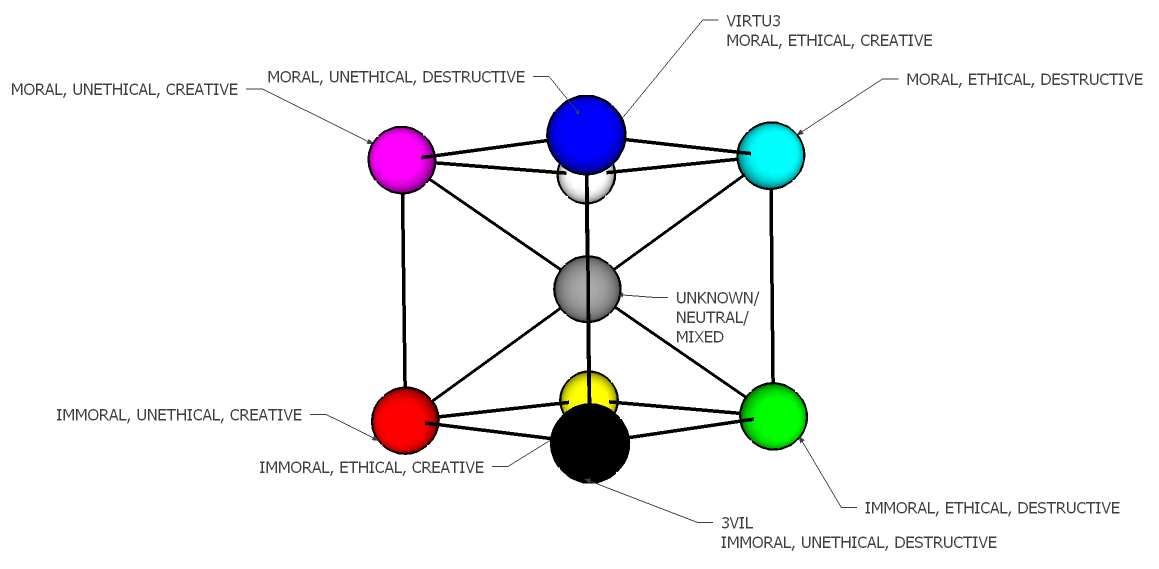 |
| The Relativistic Plane in VIRTU3-space |
 |
| The Relativistic Plane |
From the perspective of the selectively blind or the absolutist, there are huge differences between different parts of the relativistic plane. One of these six ways of looking at the world becomes dominant as you approach each of the six edges of the hexagon-shaped relativistic plane.
It's easier to get people to rally around absolutism, so most political parties or social movements drift towards the red, blue or green edge.
- Moral absolutism tends to be associated with progressive movements
- Ethical absolutism tends to be associated with independence movements
- Consequential absolutism tends to be associated with conservative movements
- Organized religious/ideological institutions grow out of particular combinations of ethical and moral beliefs. Consequential blindness comes from the tendency of these types of institutions to stick with official doctrines despite (or even because of) the destructive results of past applications of those ideas.
- The core purpose of governments is to punish immoral behaviors (intentional murder/theft/etc.) and protect or reward moral behaviors (with renown/subsidies/etc.). Governments can drift towards ethical blindness unless they are vigilantly policed by powers outside of their legislative/judicial purview.
- Markets exist as a successful set of ethical rules that allow for peaceful trade between relative strangers. Once it reaches a certain size a market becomes morally blind as participants have no way to know anything about the moral intentions of other participants.








